BMW has long been synonymous with driving pleasure, engineering excellence, and a distinctive blend of luxury and performance.
Over the decades, the brand has built a passionate following among enthusiasts and casual drivers alike, thanks to its reputation for crafting vehicles that are engaging to drive, beautifully engineered, and often ahead of their time in terms of technology and design.
However, as with any automaker, not all models age equally, and the landscape of older BMWs available on the used market is a mixed bag. For prospective buyers and collectors, understanding which older BMWs stand the test of time—and which ones can become costly headaches—is crucial before committing.
This article delves into both sides of the spectrum, exploring five older BMWs that remain highly desirable, reliable, and worthwhile investments today, alongside five models that are best avoided due to their propensity for expensive repairs, unreliable electronics, or other problematic traits.
The allure of older BMWs lies not just in their brand prestige but in their engineering philosophy. Historically, BMW has emphasized rear-wheel-drive layouts, balanced chassis, and driver-centric dynamics that have earned the brand the nickname “The Ultimate Driving Machine.”
The golden eras of BMW are often associated with models that combine mechanical simplicity with thrilling performance, making them both engaging to drive and easier to maintain than modern cars laden with complex electronics.
Models such as the E30 3 Series and E39 5 Series have become legends not only for their styling and performance but also for their durability and strong enthusiast communities that help keep these cars on the road and competitive.
However, it’s not all smooth sailing. As BMW pushed forward with technological innovation, especially in the 2000s and beyond, complexity increased.
While features like iDrive, turbocharged engines, and sophisticated electronic systems enhanced performance and comfort, they also introduced new failure points and maintenance challenges.
Some models became notorious for expensive repairs and reliability issues, causing frustration for owners and detracting from the brand’s otherwise stellar reputation.
This dichotomy means that buying an older BMW is often a calculated risk: owners must be prepared for the potential of costly repairs, but can be rewarded with an unparalleled driving experience.
This article’s first half highlights five older BMWs that have demonstrated exceptional longevity, driver enjoyment, and manageable ownership costs, making them excellent choices for enthusiasts or practical buyers looking for a classic BMW experience.
These cars exemplify the best qualities of the brand’s heritage—solid engineering, balanced driving dynamics, and a level of simplicity that has allowed them to age gracefully. On the other hand, the second half focuses on five older BMWs that buyers should approach with caution or outright avoid due to their known issues.
These cars may suffer from chronic reliability problems, complex electronics that can be costly to fix, or design flaws that have impacted their reputation.
Ultimately, whether you are drawn to the timeless charm of the E30 3 Series or tempted by the modern luxuries of the E60 5 Series, understanding the nuances of BMW ownership is key to making a smart investment. This guide will provide you with detailed insights into which models offer lasting value and which ones may be better left on the lot.
By the end, you’ll be better equipped to navigate the used BMW market and select a car that delivers the driving pleasure and reliability you expect from this iconic brand.
Also Read: Top 10 Worst and 10 Best Trucks for Towing
5 Older BMWs Worth Owning Today
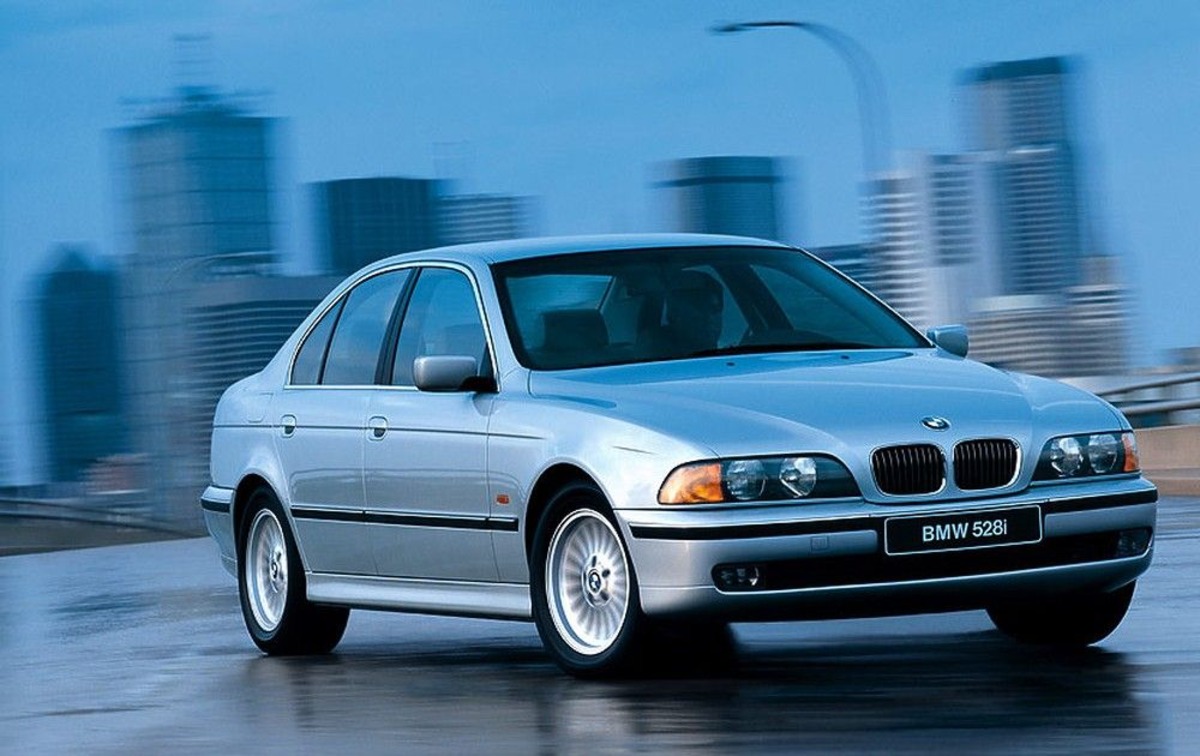
1. BMW E39 5 Series (1997–2003)
The BMW E39 5 Series is widely regarded as one of the finest examples of German automotive engineering from the late 20th century, embodying a perfect blend of luxury, performance, and timeless design. What sets the E39 apart is its impeccable balance between driver engagement and daily usability—a rare combination that few modern vehicles manage to achieve.
Beneath its classically elegant exterior lies a chassis engineered with precision; it offers an impressively composed ride, sharp yet predictable handling, and a level of mechanical refinement that has aged exceptionally well.
The inline-six engines, particularly the 3.0-liter M54, have earned a stellar reputation for durability, smoothness, and relative ease of maintenance. This powerplant delivers linear power with a satisfying growl, providing spirited performance without compromising reliability.
Moreover, the E39 M5, equipped with the naturally aspirated S62 V8, remains an enthusiast’s dream, known for its potent yet tractable performance and mechanical robustness.
What truly makes the E39 endure in the used market is the thoughtful engineering behind it; it steers with precision, brakes confidently, and offers a level of refinement that holds up against many newer models.
Additionally, the interior quality speaks to BMW’s attention to detail during this era—high-grade materials, intuitive controls, and comfortable seating all contribute to a driving environment that feels both luxurious and driver-centric. Ownership costs are reasonable compared to contemporary BMWs, thanks in part to the absence of overly complicated electronics.
While some components, such as the cooling system, suspension bushings, and the occasional electronic module, may require periodic attention, the E39’s robust mechanical foundation means these are manageable issues for a committed owner. Enthusiast communities and aftermarket support further enhance the ownership experience, making it easier to source parts and find knowledgeable mechanics.
For buyers seeking a luxury sedan that combines classic BMW driving dynamics, durability, and an elegant design, the E39 remains one of the most compelling options in the used car market today.
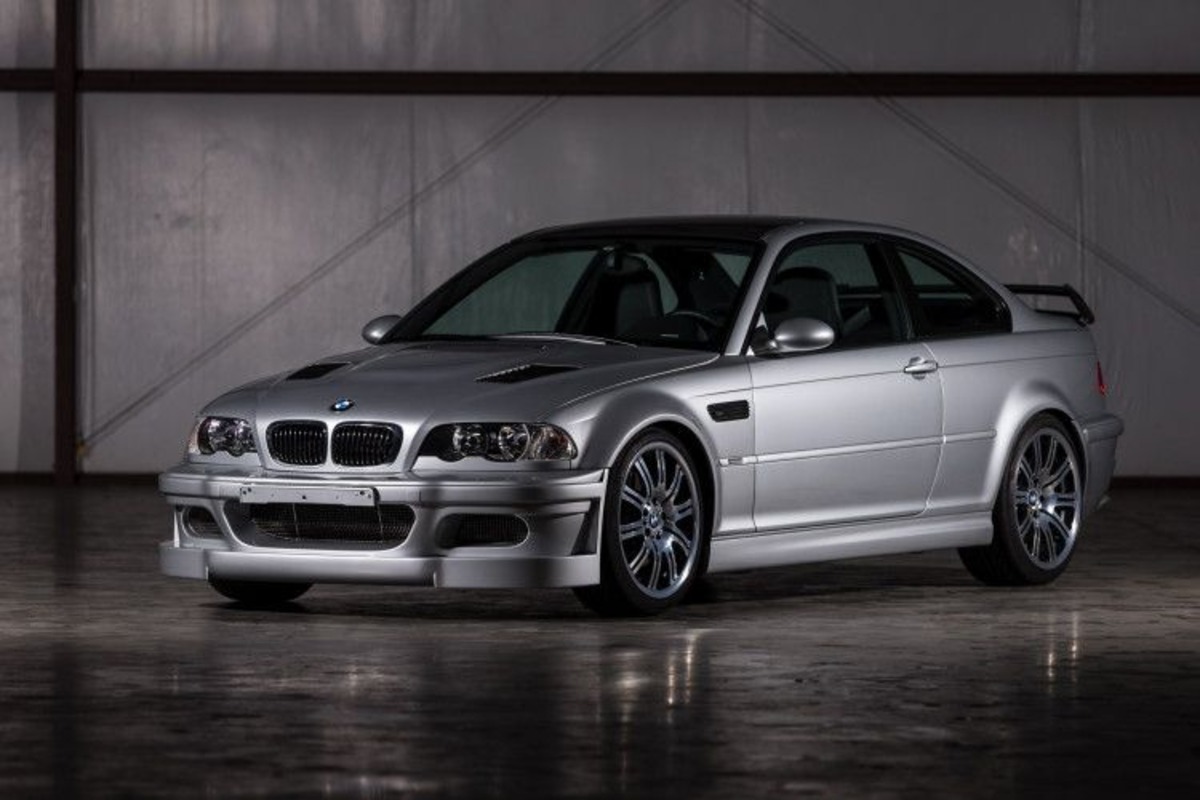
2. BMW E46 3 Series (1998–2006)
The BMW E46 3 Series is often celebrated as the definitive driver’s car of its generation, and for many, it represents the pinnacle of the 3 Series lineage. The E46 strikes a remarkable balance between sporty performance, refinement, and daily practicality, offering an engaging experience behind the wheel without sacrificing comfort or reliability.
Its chassis design is finely tuned, delivering nimble handling with excellent feedback through the steering wheel, which remains one of the sharpest and most communicative in the segment.
Under the hood, the inline-six engines, particularly the 2.5 and 3.0-liter variants found in the 325i and 330i models, are celebrated for their smooth power delivery, strong mid-range torque, and commendable reliability when properly maintained.
The E46 also marked a significant step forward in terms of safety and comfort features, introducing more advanced airbags, stability control, and better sound insulation, which make it far more enjoyable as a daily driver. Maintenance and repair costs are notably lower than newer BMW models, as the electronics are less complex and more accessible for DIY enthusiasts and independent mechanics.
Common upkeep tasks such as cooling system refreshes, suspension bushing replacements, and brake maintenance are well-documented and supported by an extensive aftermarket, making it easier to keep the car in top condition.
Another aspect that elevates the E46’s appeal is its timeless styling—clean lines, balanced proportions, and a driver-focused cockpit that hasn’t aged like many modern designs. Its versatility is enhanced by a range of body styles, including sedan, coupe, convertible, and wagon, catering to a broad spectrum of buyers.
With strong community support, a vibrant aftermarket, and a well-earned reputation for both fun and reliability, the E46 remains a highly recommended choice for anyone looking for a classic BMW that delivers authentic driving pleasure without the headaches of more modern, complicated vehicles.
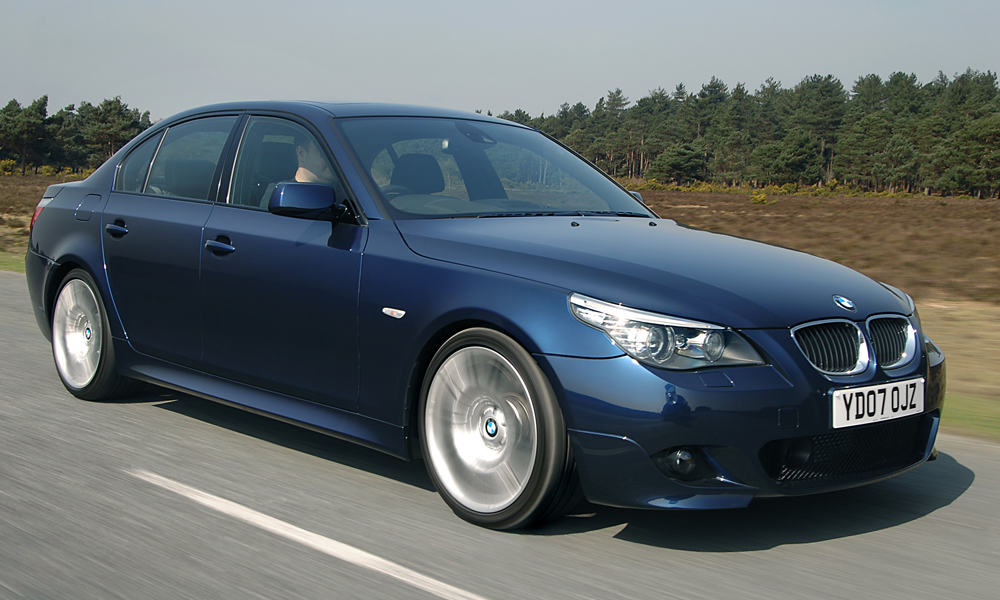
3. BMW E60 5 Series (2004–2010)
The E60 5 Series introduced a bold new era for BMW, featuring a radical design by Chris Bangle that polarized opinions but pushed the brand into a more modern aesthetic direction.
Beyond its controversial styling, the E60 offers a sophisticated driving experience underscored by dynamic handling, powerful engines, and a comfortable interior packed with advanced features for its time.
The chassis blends agility with composed ride quality, making it equally adept at spirited driving and long-distance cruising. Engine choices range from efficient inline-sixes to robust V8s, with the naturally aspirated V8 in the 545i providing a compelling mix of smooth power and refinement.
The M5’s S85 V10 engine is the pièce de résistance, revered for its screaming high-revving character and track-worthy performance, though it demands meticulous maintenance and care.
While the E60 does come with more complex electronics and a higher density of onboard technology than its predecessors, which can lead to occasional reliability concerns, many owners find that diligent maintenance and prompt attention to issues can keep these cars running well.
The introduction of the iDrive infotainment system, adaptive suspension, and electronic damping marked a technological leap, but also increased complexity. That said, many of these features enhance comfort and drivability when functioning correctly. Interior materials and ergonomics are a step up from previous generations, with spacious seating and driver-focused controls.
Despite the complexity, the E60 remains a rewarding ownership experience for those who value cutting-edge tech paired with traditional BMW driving dynamics. Enthusiast forums and repair guides provide extensive support to navigate the intricacies of these systems, making it feasible to own and maintain them with the right knowledge.
For buyers willing to accept some technological challenges in exchange for modern performance and luxury, the E60 stands as a worthy option among older BMWs.
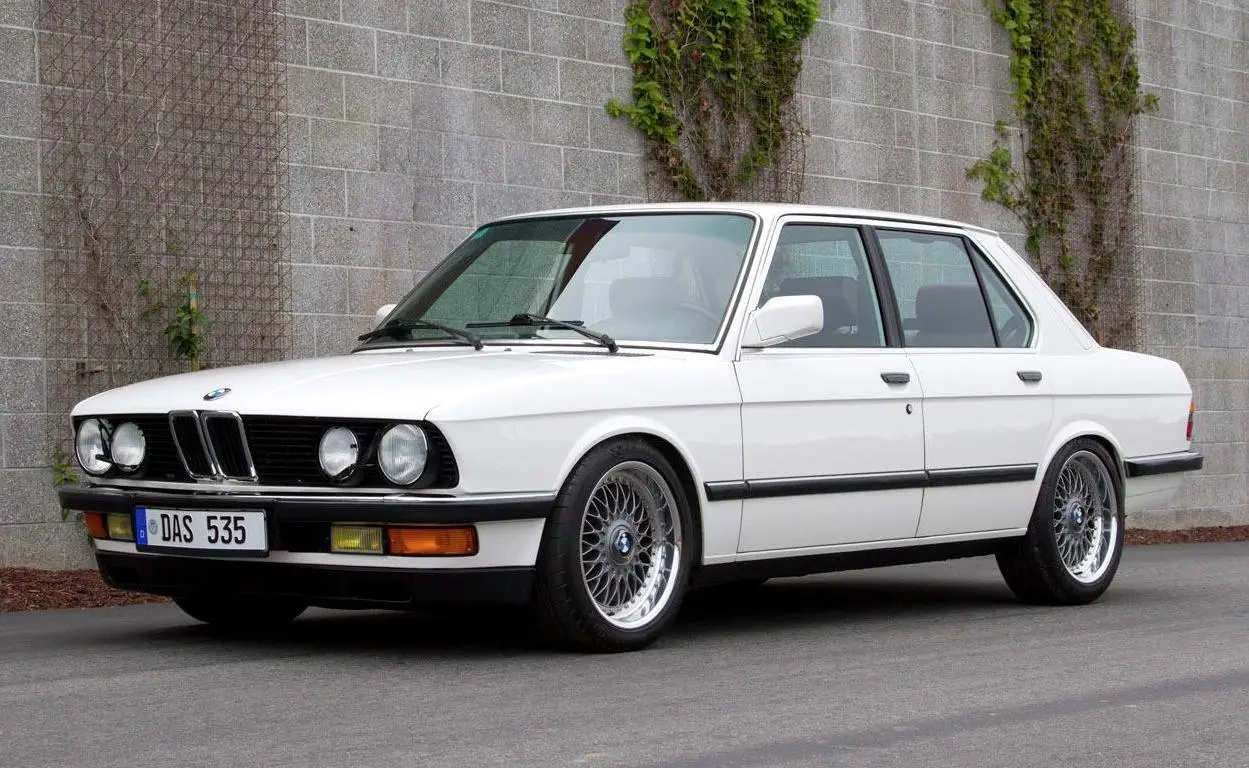
4. BMW E28 5 Series (1981–1988)
The E28 5 Series is a classic BMW that represents a golden era of mechanical purity and engineering simplicity. It introduced several technological advancements for BMW at the time while retaining a straightforward, driver-focused approach that appeals to enthusiasts today.
The styling is elegantly boxy, featuring clean lines and a purposeful stance that has aged gracefully. Underneath the hood, the robust M30 inline-six engine offers smooth and dependable performance, renowned for its longevity and ease of maintenance. The E28 was also home to the very first M5, which set the blueprint for high-performance sedans worldwide.
This early M5 combined race-bred technology with everyday usability, making it an iconic model that continues to command respect and high values in the collector market. Beyond the M5, the E28’s mechanical simplicity means fewer electronic complications, making it easier to maintain compared to later BMWs.
The straightforward suspension design, durable engine architecture, and less complex electrical systems contribute to its reputation for reliability when properly cared for. Replacement parts, while sometimes harder to find than those for more recent models, are still available through specialist suppliers and enthusiast networks.
The driving experience of the E28 is characterized by direct steering, engaging throttle response, and a connection to the road that modern cars often lack.
For those who appreciate vintage BMWs and desire a classic car with solid engineering and mechanical simplicity, the E28 offers a rewarding ownership experience. Its blend of timeless design, mechanical robustness, and historical significance makes it a standout choice among older BMWs.

5. BMW E30 3 Series (1982–1994)
The BMW E30 3 Series is arguably the most beloved and recognizable classic BMW, embodying everything that enthusiasts adore about the brand: sharp handling, balanced chassis, and timeless design. The E30’s charm lies not only in its iconic boxy styling but also in its mechanical purity and versatility.
Available in various body styles—including sedan, coupe, convertible, and the legendary M3—the E30 catered to a wide audience, from daily drivers to racing enthusiasts.
The naturally aspirated inline-four and inline-six engines powering the non-M models provide a solid mix of reliability and performance, with many examples still running smoothly decades later thanks to their simple, robust design.
The E30 M3, with its high-revving S14 four-cylinder engine, remains one of the most revered sports cars of its era, celebrated for its precision and track prowess. From a maintenance standpoint, the E30 is refreshingly straightforward. Its lack of complicated electronics means fewer things can go wrong, and most mechanical systems are accessible for owners with basic mechanical skills.
The availability of parts is extensive due to the car’s popularity and active enthusiast community, making restoration and maintenance more feasible and affordable than many other classic cars. Additionally, the E30’s excellent weight distribution and rear-wheel-drive layout deliver a pure driving experience that continues to resonate with fans of classic sports sedans.
For anyone seeking a timeless BMW that combines fun, simplicity, and heritage, the E30 remains a top-tier choice that’s both practical to own and rewarding to drive.
5 Older BMWs You Should Walk Away From
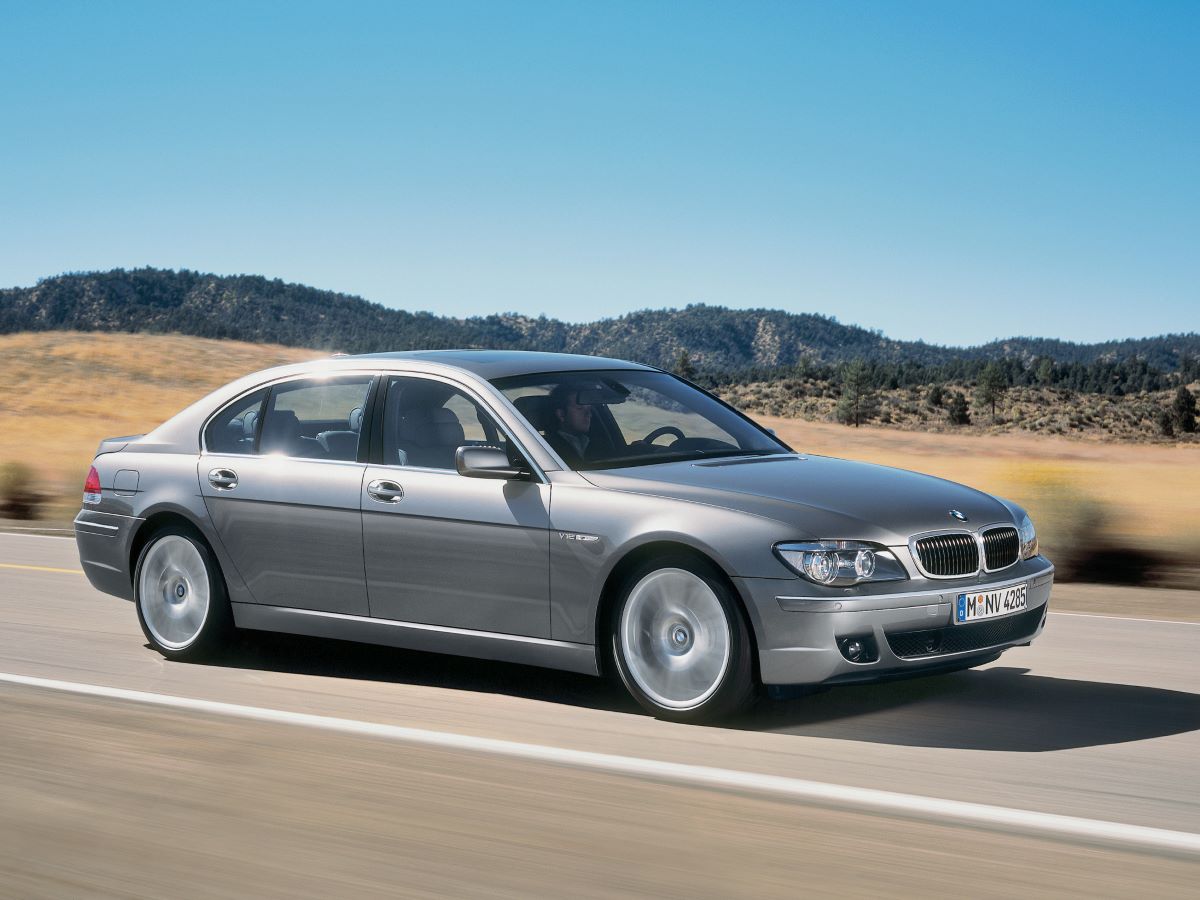
1. BMW E65 7 Series (2001–2008)
The BMW E65 7 Series represents one of the most contentious chapters in BMW’s history, combining groundbreaking ambition with a litany of reliability and design issues that make it a car many enthusiasts and buyers tend to avoid.
Designed under the direction of Chris Bangle, the E65’s radical styling was a dramatic departure from traditional BMW aesthetics, characterized by what many described as “flame surfacing” and a shape that polarizes opinions even today.
While some admired the boldness of the design, others found it unattractive and dated quickly, making it harder to appreciate in the secondhand market. Beyond its controversial looks, the E65 was packed with advanced electronics, including early iterations of the iDrive infotainment system, which, despite being innovative at the time, was plagued by confusing menus, frequent glitches, and a steep learning curve.
This technological complexity only compounded the difficulties faced by owners, especially as the car aged and these systems began to malfunction more regularly.
Mechanically, the E65 was a marvel on paper, with options ranging from inline-sixes to V8 and even V12 engines, but many of these powertrains brought headaches in the long term. The air suspension system, intended to provide a supple and adjustable ride, often fails due to leaking airbags and malfunctioning compressors, leading to costly repairs that can easily run into thousands of dollars.
Electrical gremlins are commonplace in these models, affecting everything from window regulators to critical control modules, leaving owners reliant on dealership-level diagnostics and expensive component replacements. The transmission systems, particularly the early automatic units, sometimes suffered from rough shifting and premature wear, adding to maintenance expenses.
In addition, fuel consumption in these heavy luxury sedans was significant, especially for V8 and V12 models, which can make running costs prohibitively high for daily use.
Given these factors, the E65 7 Series, while undeniably luxurious and packed with technology, is often described as a “money pit” by owners. Parts are expensive, repairs are complicated, and the car’s complexity means that DIY maintenance is nearly impossible for most enthusiasts.
Moreover, resale values have remained relatively depressed compared to other BMW classics, reflecting buyer hesitancy.
For those seeking an older BMW that blends prestige with reliability, the E65 7 Series is generally a model to avoid unless the buyer has a substantial maintenance budget and a strong desire to own a unique piece of BMW’s design history. The potential joy of owning such a flagship vehicle is often outweighed by the stress and cost of keeping it running well.
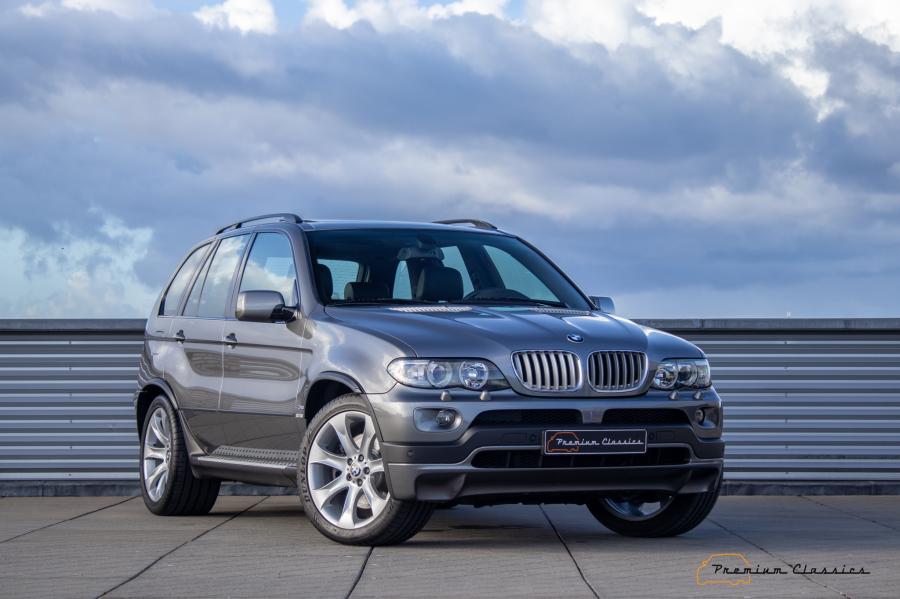
2. BMW X5 (E53) with V8 (1999–2006)
The E53 BMW X5 was BMW’s first venture into the SUV segment and represented an ambitious attempt to combine the brand’s sporty handling with the practicality and stature of an SUV. However, while the concept was groundbreaking, the execution, especially in the V8 variants, came with significant drawbacks that make this model less desirable today.
The early V8 engines offered plenty of power but were prone to several mechanical issues that can quickly erode the ownership experience. Notably, the M62 V8 engines in early E53 X5s were susceptible to VANOS system failures, oil leaks, and cooling system problems that, if neglected, could lead to catastrophic engine damage.
The N62 V8 that replaced the M62 improved on power and efficiency but introduced its own complex issues, such as electrical faults in the variable valve timing system and costly timing chain problems.
On top of engine reliability concerns, the E53 X5’s drivetrain and suspension components are complex and aging, often requiring expensive repairs or rebuilds.
The all-wheel-drive system, while excellent for traction and handling, includes transfer cases, differentials, and driveshafts that may suffer wear after prolonged use, especially if off-road driving or aggressive use is involved.
The air suspension, an option on many models, is particularly prone to failure, leading to sagging ride height, compressor issues, and expensive component replacements.
Additionally, the X5’s electronic systems can be temperamental, with issues ranging from malfunctioning window regulators to problematic instrument clusters, all of which can add up quickly in repair bills.
Fuel economy in the V8 X5 variants is notoriously poor, making them expensive to operate on a daily basis in today’s economy. Combined with the high maintenance costs and potential for expensive repairs, the E53 V8 X5 demands a cautious approach from buyers.
While it can still be an appealing vehicle for those seeking an older BMW SUV with a commanding presence and sporty driving characteristics, the E53 V8 is often best avoided in favor of the inline-six variants or later-generation X5 models that benefit from improved reliability and technology.
Without a meticulous maintenance history and a willingness to invest in ongoing upkeep, the early V8 X5 can quickly become a money pit.
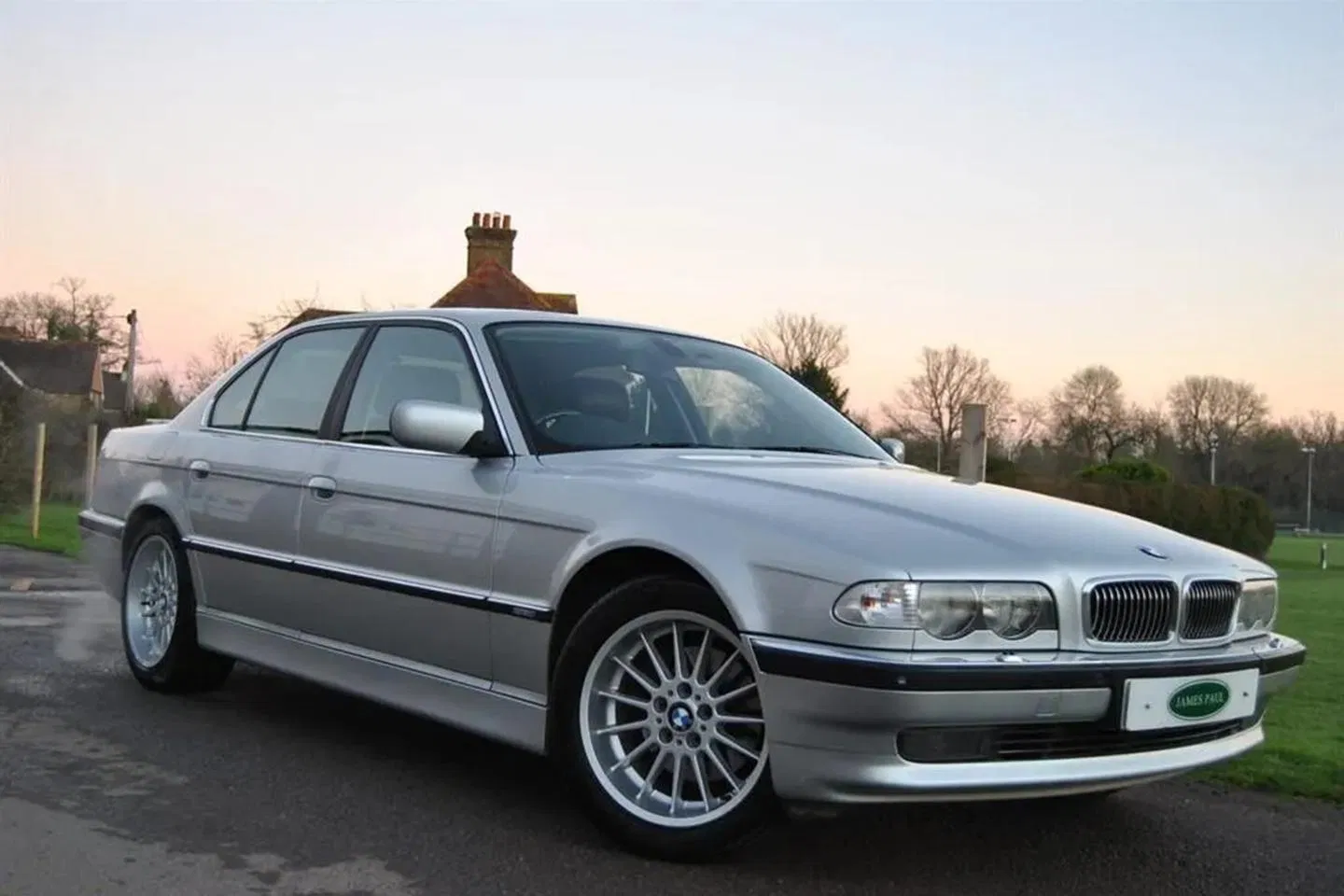
3. BMW 7 Series (E38) with V12 (1994–2001)
The E38 7 Series is often lauded as a classic luxury sedan that embodied BMW’s blend of performance and refinement in the 1990s. However, when it comes to the V12-powered variants, this respect is tempered by the reality of ownership challenges that many find difficult to justify.
The V12 engine, known as the M70 or later the M73, is a marvel of engineering with its smoothness, power delivery, and exclusivity, but it comes at a steep cost. The engine’s complexity means that routine maintenance is significantly more involved and expensive compared to six- or eight-cylinder alternatives.
Parts for the V12 are specialized and costly, and any major repairs, such as head gasket replacements, timing chain work, or cylinder head servicing, can run into thousands of dollars, putting them out of reach for many enthusiasts.
Additionally, the V12’s fuel consumption is prodigious, even by the standards of a flagship luxury sedan, making daily driving expensive in terms of fuel costs alone. The additional weight of the engine also affects the car’s handling and wear on components such as brakes and suspension.
As these cars age, potential issues with rust, especially in the chassis and suspension components, add to the maintenance burden. Electronic components, including aging control modules and climate control systems, can also fail and be costly to replace or repair due to the car’s advanced (for its time) technological features.
While the E38 7 Series V12 models remain impressive showpieces of BMW’s engineering prowess, they are best suited to collectors or owners with deep pockets and access to specialist service centers.
For those seeking a classic BMW 7 Series with more manageable costs and maintenance, the inline-six or V8 models are far better bets. The V12’s exclusivity is appealing but comes with the caveat of financial and practical challenges that can make ownership more stressful than enjoyable.

4. BMW E36 M3 (1992–1999) – Early Models
The E36 M3 is often celebrated as one of BMW’s most iconic sports cars, delivering an accessible yet thrilling driving experience. However, the earliest iterations of this model carry a reputation for some notable reliability and mechanical issues that prospective buyers must consider carefully.
Early E36 M3s were prone to a range of engine-related problems, including crankcase failures, head gasket leaks, and issues with the VANOS variable valve timing system.
These problems, while not universal, are significant enough that they require thorough inspection and often costly repairs or preventative maintenance. The S50 and S52 engines powering these cars are high-strung and performance-oriented, which means wear and tear can be accelerated if the vehicle has been driven hard or neglected.
Beyond the engine, early E36 M3s can suffer from corrosion in the chassis and suspension components, which can lead to structural and handling issues if not addressed. The complexity of the M3’s suspension setup also means that worn bushings or shocks need timely replacement to maintain the car’s precise handling characteristics.
Electrical systems in these early models are also susceptible to gremlins, including dashboard cluster failures and sensor issues, which can be frustrating to diagnose and repair. Parts availability is generally good due to the model’s popularity, but quality and cost can vary widely depending on source.
Despite these concerns, the E36 M3 remains a highly desirable car, especially when it comes with a documented service history and has had any common issues addressed proactively.
Buyers interested in this model should prioritize thorough pre-purchase inspections and budget for necessary repairs and maintenance. Later production years tend to be more reliable and better sorted, making early models riskier investments. Without proper care and attention, early E36 M3 ownership can become a costly endeavor rather than the joyful experience many seek.
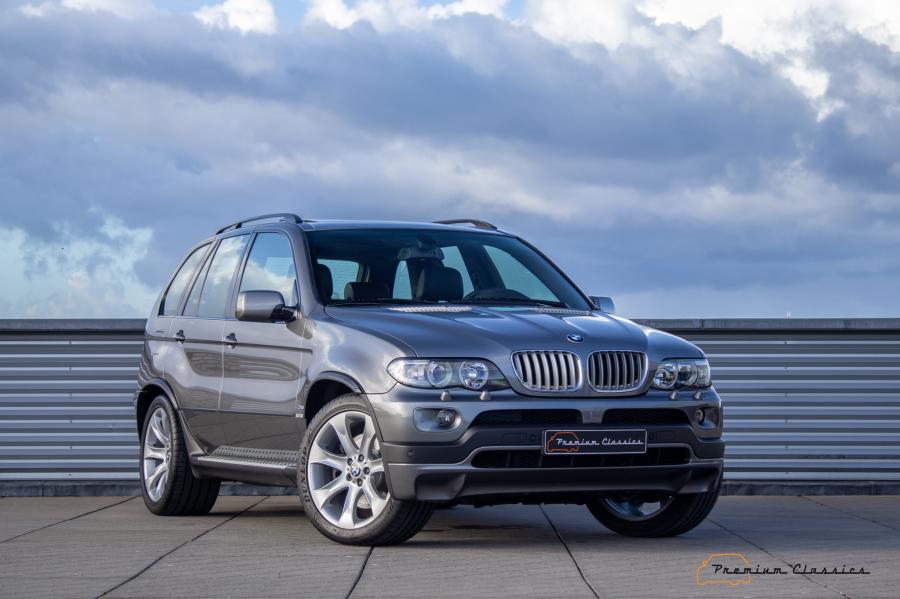
5. BMW E53 X5 V8 Diesel (2001–2006)
The diesel-powered BMW E53 X5 with the 3.0-liter M57 V8 engine offers an appealing combination of power and fuel efficiency on paper, especially for those looking to balance performance with economy.
However, this model often falls short in practice due to a variety of issues that make it a less attractive option for many buyers, particularly in markets where diesel maintenance infrastructure is limited.
The turbocharged diesel engine, while robust in many respects, is prone to specific failures such as turbocharger malfunctions, injector problems, and clogging of the diesel particulate filter (DPF). These failures not only lead to significant repair costs but can also cause the vehicle to enter limp mode, reducing drivability until fixed.
Moreover, diesel technology demands specialized diagnostic tools and knowledge, which can complicate maintenance for owners unfamiliar with the platform. The E53 chassis and suspension, already aging, tend to suffer from wear and tear that is exacerbated by the heavier diesel powertrain.
Suspension bushings, control arms, and electronic systems often require replacement or repair, and the added complexity of diesel emissions control systems means that problems can multiply as the car ages. Parts availability for diesel-specific components varies, and labor costs for these repairs tend to be higher due to the specialized nature of the work.
For buyers attracted to the idea of an older BMW diesel SUV, the E53 X5 V8 diesel is a model best approached with caution. Its maintenance demands, combined with potential reliability issues and the expense of diesel-specific repairs, make it a risky proposition.
Later-generation diesel X5s or other diesel BMWs with improved technology and more reliable components provide better alternatives. The E53 diesel’s appeal is ultimately outweighed by its potential for costly and complicated ownership, especially for those not fully versed in diesel vehicle maintenance.
Also Read: Top 10 Budget-Friendly & Luxury Trucks You Can Buy
In the world of older BMWs, the line between a rewarding ownership experience and a costly mistake can be razor-thin. This article has explored five models that continue to shine as paragons of reliability, performance, and driver engagement, alongside five others that carry reputations for complexity and chronic issues that make them less desirable choices for the discerning buyer.
Understanding these distinctions is vital, especially given how the nuances of design, engineering, and technology advancements over the decades have influenced the longevity and ownership experience of these vehicles.
The older BMWs worth owning today—such as the E39 5 Series, E46 3 Series, and E30 3 Series—stand out because they embody the core values that built BMW’s reputation: mechanical purity, driver-focused engineering, and a harmonious blend of performance and comfort.
These models generally feature robust, naturally aspirated engines, straightforward mechanical layouts, and fewer electronic systems that can fail prematurely. They offer a blend of timeless design and dynamic driving experiences that still hold up remarkably well, even by today’s standards.
The continued availability of parts, strong enthusiast communities, and extensive knowledge base around these vehicles further cement their place as smart investments for anyone seeking a classic BMW experience.
On the other hand, the models to avoid tend to be those where BMW’s push for advanced technology and new design philosophies led to greater complexity, sometimes at the expense of reliability. Cars burdened with early iterations of the iDrive system, turbocharged engines with intricate cooling needs, or electronic gremlins that plague critical components often translate into higher maintenance costs and frequent trips to the mechanic.
For buyers unprepared to handle these challenges, such models can quickly become financial traps rather than joyrides. Prospective owners need to research extensively, seek expert opinions, and carefully inspect these vehicles before purchase, or better yet, avoid them entirely if budget or mechanical know-how is limited.
Buying an older BMW is more than just purchasing a car; it’s buying into a legacy of driving enjoyment and engineering craftsmanship. However, that legacy comes with responsibilities: regular maintenance, thoughtful repairs, and a willingness to invest time and money into keeping the vehicle in good health.
The models highlighted as worthy investments are those that reward this commitment with years of driving pleasure, reliability, and a strong sense of connection to the road. They represent the best that BMW has offered and continue to serve as ambassadors of the brand’s heritage.
Conversely, the models to steer clear from remind us that not every chapter in BMW’s history has been flawless. They serve as cautionary tales about the pitfalls of complexity and the importance of choosing wisely when delving into the used car market. With the right knowledge and preparation, enthusiasts can avoid these traps and focus on the models that offer the most value, both financially and emotionally.
In the end, owning an older BMW can be a deeply rewarding experience if approached with care, knowledge, and realistic expectations. Whether you’re drawn to the purity and simplicity of the E30 or intrigued by the advanced luxury of the E60, the key is to choose a model that aligns with your priorities—be it reliability, driving dynamics, or technological sophistication—and to maintain it diligently.
By doing so, you can ensure that your BMW ownership journey is filled with enjoyment rather than frustration, and that the car you choose will continue to deliver the famed “Ultimate Driving Machine” experience for years to come.
